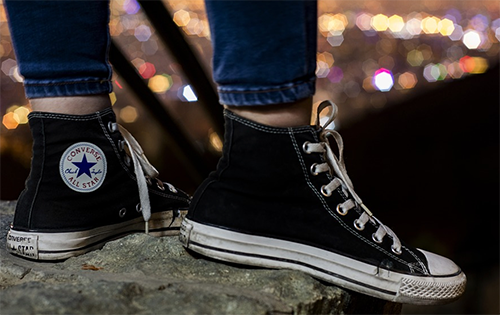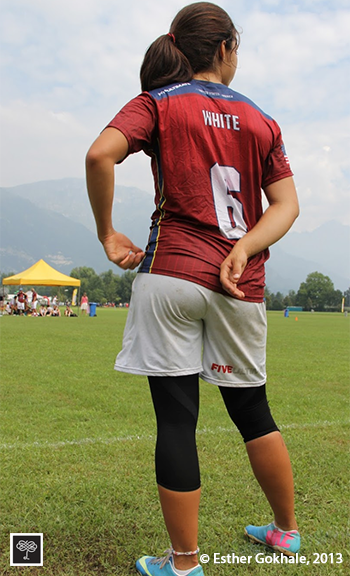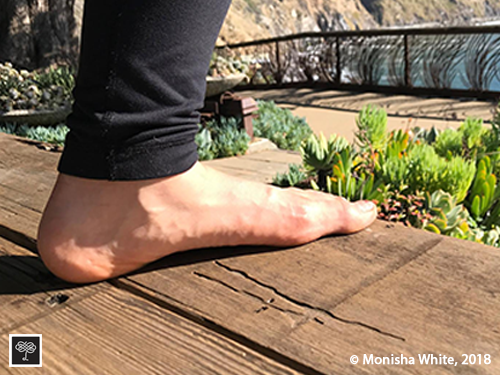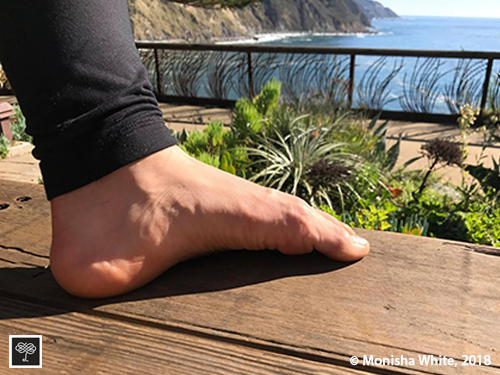Making Flat Feet Into Arched Feet
Growing up as Esther’s third child, I was lucky to have been brought up with my posture (almost entirely) intact. The weak spot was my feet. Despite Esther’s encouragement (and sometimes nagging) to wear healthy shoes and sandals, I was pulled by the shoe trends of the day. I wore Converse and Kathy Madden, and as a result my feet were flat and undeveloped.

Converse shoes do not encourage a strong arch shape, but often draw youngsters because of their popularity. Photo courtesy Pixabay.
I played soccer, which was a big part of my identity. At some point I started having knee pains that caused me to need to stop playing 15 minutes into the game. Unable to run for any significant length of time, I tested out the goalie role, which actually ended up suiting me quite well. (Note from Esther: Monisha was rated the top goalie in her high school league and helped her club team win a Northern California state championship.) I saw a doctor about my knee problems and was told that my flat feet were part of the problem and that I should do foot exercises. Hmmm. That sent me running back to my mom, who was happy to enroll me in her next Gokhale Method Foundations Course. I haven’t had any knee pain since, even though I ramped up my running level as an Ultimate frisbee player. (Note from Esther: She captained the Stanford Women’s Ultimate frisbee team and led them to a national championship victory. She also won a world championship with Team USA in Lecco, Italy in 2013.)

I transitioned from soccer to Ultimate. In 2013, I played with Team USA in the World Championships.
In the picture below, you see my foot arches collapsed and my foot “flat.” All babies start off with flat feet. Ideally, the foot muscles that shape the foot’s arches would be used and strengthened all through childhood, first when learning to balance in standing, then in learning to walk, and later in all sport and daily activities. My foot muscles, partly because of my poor choice of shoes as a teenager, didn’t get strong until my late teen years.

Here, my foot has a healthy kidney bean shape, with intact inner, outer, and transverse arches (note: the arches are extra pronounced here as my foot is up on a bench and unweighted).

Some useful exercises to help your feet get some natural arch back are the inchworm, “eat the cloth,” and “grab the ball,” all detailed on pages 211-212 of 8 Steps to a Pain-Free Back.
Learning to recreate a healthy foot shape and develop strength in your foot muscles is an important part of restoring healthy architecture not only in your knees and feet, but also in your hips, pelvis, and entire spine.
In most modern lifestyles there are few opportunities to immerse yourself in nature. Esther and I recently taught a workshop at Esalen; the center's dirt paths, meadows, and rolling hills were inspiring in an old, wise way. Visiting places like this helps us reconnect with the lifestyle and pace of older generations. I’m grateful for the help in restoring some of the precious things that our modern culture has lost to the past.

Comments
I thought flat flexible zero
I thought flat flexible zero drop shoes like converse were ideal as they are close to barefoot.
I thought the same as you -
I thought the same as you - that shoes that have the thinnest soles possible are the best choice -- i think converse have much thinner soles than many other types of shoes. i'm confused by this as well.
It depends on your starting
It depends on your starting point. If you have the kind of feet a hunter gatherer would have from walking on contoured surfaces from the get go, then barefoot is best. If you have lost some structure in your feet and haven't developed robust natural standing and walking patterns, then some support is helpful. It all depends on your feet, your patterns, your knowledge, and the available bandwidth to apply your konwledge.
So if you're at that flat
So if you're at that flat-footed place, shoes with support are a necessary crutch as I begin to strengthen them? Eventually with continued strengthening that shouldn't be necessary? What kind of timeframe did Monisha experience improvements?
Learn how to stand bearing
Time frame - depends on many things. But we reach students to #5 after our Gokhale Method Foundations course (can be as short as a couple of days. From there forward it depends on how rigid their feet have become and how well they apply what they've learned.
Add New Comment
Login to add commment
Login